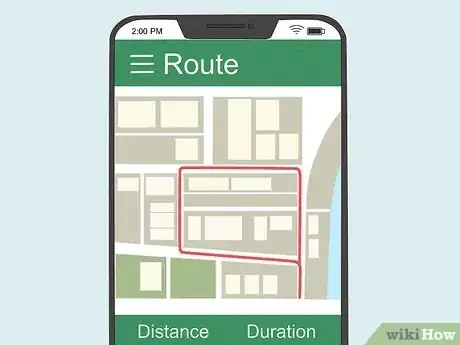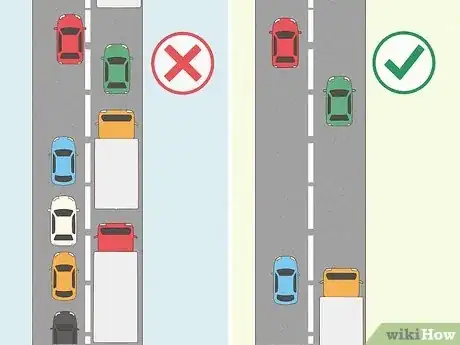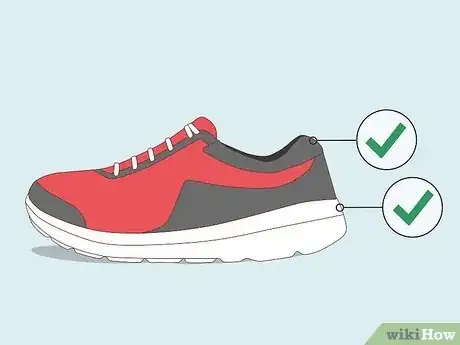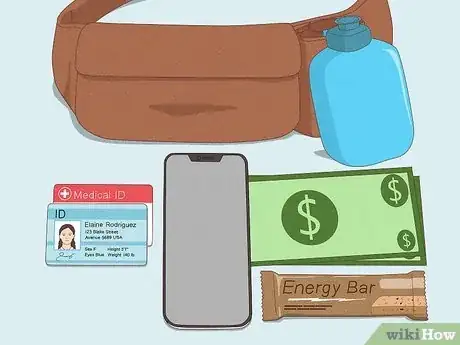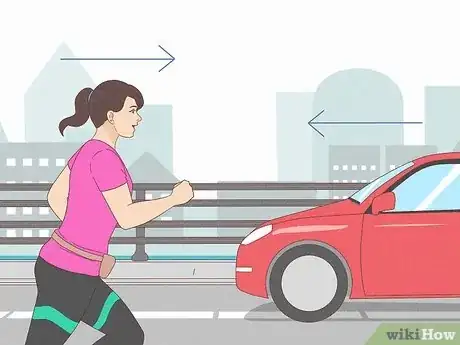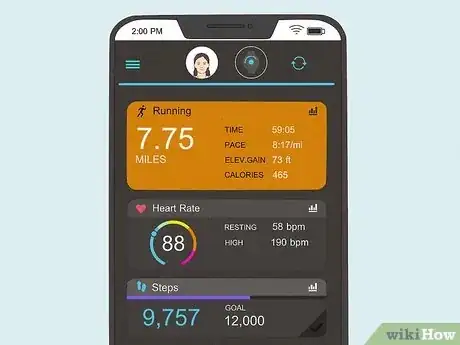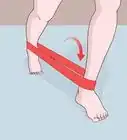This article was written by Babis Kanellopoulos and by wikiHow staff writer, Glenn Carreau. Babis Kanellopoulos is a Personal Trainer and the Owner of Pod Fitness in London, UK. Babis specializes in helping clients use fitness to overcome difficulties and gain self-confidence. He has experience in kickboxing, long distance running, and martial arts. Pod Fitness sessions combine the focus of personal training with the benefits of small group, personalized, and structured training.
There are 7 references cited in this article, which can be found at the bottom of the page.
This article has been viewed 2,001 times.
If you want to get some fresh air, exercise, and explore your city, running is a great way to do it. But what’s the best way to run safely in an urban environment? City living is never dull, so it’s essential to stay safe and alert. Read on for our complete list of tips that’ll help you get the most out of your city running routine!
This article is based on an interview with our personal trainer, Babis Kanellopoulos, owner of Pod Fitness. Check out the full interview here.
Steps
Plan out your route.
-
Mapping beforehand allows you to chart a safe path through the city. Research the best places to run around your city, and note everything significant: busier areas, well-lit streets, parks with paths for runners, and other helpful information. Put together a route based on your research and preferences, whether you want to avoid high-traffic areas, find a scenic area, or cover a certain number of miles.[1] X Research source
- You can get help with your route from local running clubs, running apps like Strava, Map My Run, and Runkeeper, or other runner friends in the same city.
- Plan a route with safety in mind, too. Pick a familiar area so you can easily adjust your course if you need to.[2] X Research source
Run in between busy hours.
-
Going for runs during rush hour can be frustrating and risky. When there are more drivers on the road, you’ll spend more time waiting on (and dodging) traffic. Schedule your runs around rush hours; these can vary by city, but typically that means running in the early morning or after 9 AM.[3] X Research source Then, in the afternoon, try running before 4 PM or after 7 PM.
- It’s also safer to run in broad daylight if possible. If your schedule will only let you run in the early morning or after dark, stick to well-lit streets and busier areas where there’s always foot traffic.[4] X Research source
Use cushioned sneakers.
-
Protect your feet from all the hard pavement you’ll be running on. Wear running shoes that have padded soles and good ankle support so that you’ll have no problem covering different types of terrain. Your route through the city might have uneven pavement, curbs, sewer grates, and potholes along the way; make sure your shoes can withstand any sudden changes or obstacles.[5] X Trustworthy Source Cleveland Clinic Educational website from one of the world's leading hospitals Go to source
- Buy shoes that fit your feet. If they’re too loose, you may be tempted to tie your laces tighter around your ankles, which can cause soreness.
Bring an ID and other essentials.
-
You’ll need identification and medical information in case of emergency. It’s also good to bring a water bottle to keep you hydrated, your phone to make emergency calls, and a little money if you need to stop for a snack or drink. In addition, you might want to bring an energy bar to eat if you need a calorie boost.[6] X Research source
- Tuck any ID or keys in a sewn-in pocket where they won’t hang out and possibly get lost. If you don't have any pockets, consider investing in a running belt to carry your things.
Wear high-visibility clothing.
-
Bright, reflective gear ensures that drivers can see you clearly. Put on shirts and bottoms with vivid colors easily noticeable for drivers, even in low light. You may prefer dark colors, but they’re hard to spot at night. If you plan to run in the dark regularly, consider investing in running reflectors; when a car’s headlights shine on them, drivers can clearly see the glare.
- Wearing a shirt is also a good idea if you need to use the bathroom or buy a snack at a convenience store; they may have a dress code.
- If you’re a night runner, consider wearing a headlamp, which can guide you safely in the dark and stand out to oncoming drivers.
Run against the traffic.
-
You’re safest when you can see drivers coming. When you run with the traffic, cars come up from behind you—so it’s hard to see any potential danger coming. Run so that you’re facing the oncoming traffic; even if something goes wrong and the driver can’t see you coming, you’ll be forewarned and can avoid a collision.[7] X Research source
- Though it may be tempting, don’t run in bike lanes. If you take up space in the lane, bikers trying to avoid you might be pushed into traffic.
Stay alert.
-
Keep your eyes up, swivel your head, and double-check street crossings. No matter how well you know the route, don’t look down; keep your eyes wide open and looking ahead of you. Swivel your head to look around periodically to be aware of your surroundings. And, of course, look in all directions before you cross the street to avoid potential collisions.[8] X Research source
- Most people on the sidewalk won’t move for you. Be ready to work around pedestrians, rather than counting on them to change course.
Listen to music at a low volume.
-
Loud music means that you’re less aware of your surroundings. Music is a great way to avoid boredom on runs—and the beat of your favorite tunes can even help you set a steady pace for your run. However, it’s hard for you to hear the outside world with earbuds in, and staying alert is important for your safety. Keep the volume low, and consider only putting in one earbud while running.
Jog in scenic areas.
-
An enjoyable environment keeps you from getting bored. Find a place you love in the city and focus your runs there; this could be any section of the city that you find scenic and appealing. If you enjoy green areas, for example, find a city park or garden to jog around. When you appreciate your surroundings, you’ll also enjoy the run more.
- Run with a group or at least one friend if you need further engagement while exercising.
Use your time wisely at stoplights.
-
Jog in place to keep your heart racing, or pause and take a drink. There’s no hard-and-fast rule for stoplights, but generally, it’s good to either use them to refresh yourself or keep moving to avoid losing momentum. If you tend to forget to drink water when you’re in the zone running, use stoplights as an opportunity to take a gulp. Otherwise, try jogging in place or run back up the street a short way.[9] X Research source
- Alternatively, if your route allows it, you could simply cross the street the other way where the light is green. Regardless, aim for constant movement even when faced with stoplights.
Track your runs with an app.
-
Apps can measure your progress and connect you with other runners. Apps like Garmin Connect can give you helpful information about your runs and show how your stride is improving over time. Additionally, an app like Strava and Runkeeper can report your activity and offer a community of runners you can connect to for friendship and support.
- If you have a running goal like running longer distances, bring your phone with an app downloaded that will document the length and time of each run.
Expect runs to take a little longer.
-
Cities aren’t the best place to set new personal records. With all the traffic, crossings, pedestrians, and shops along the way, understand that running in cities generally takes a little longer than on country roads. Plan accordingly and leave early if you have somewhere to be afterward. Find a quieter spot if you want to set a new personal best.
- Make sure you tell someone where you’re going to be and how long you’ll be gone—especially if you’re going for a longer run. A friend or family member should know where you are always!
You Might Also Like
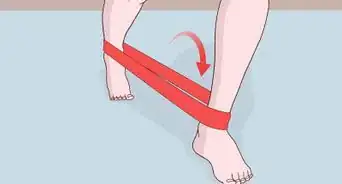


 How to Start Running
How to Start Running
 11 Easy and Comfortable Ways to Carry a Phone While Running
11 Easy and Comfortable Ways to Carry a Phone While Running
 Are My Running Shoes Worn Out? 11 Ways to Tell
Are My Running Shoes Worn Out? 11 Ways to Tell

 Breathing Tips for Running: How to Not Run Out of Breath
Breathing Tips for Running: How to Not Run Out of Breath

 The 2 Best Ways to Clean Running Shoes
The 2 Best Ways to Clean Running Shoes
 How to Start Parkour or Free Running: Training Alone, Group Training & More
How to Start Parkour or Free Running: Training Alone, Group Training & More

References
- ↑ https://www.womensrunning.com/training/road/train-full-marathon-busy-city/
- ↑ https://www.rrca.org/education/for-runners/runner-safety-tips/
- ↑ https://www.runnersworld.com/training/a20812346/what-time-of-day-do-people-run/
- ↑ https://www.nbcnews.com/better/health/scared-run-alone-female-runners-share-how-they-stay-safe-ncna935186
- ↑ https://health.clevelandclinic.org/how-to-pick-the-running-shoe-that-is-best-for-you/
- ↑ https://www.cityoftaylor.com/688/Safety-Tips-for-Runners-Walkers-Joggers
- ↑ https://www.cityoftaylor.com/688/Safety-Tips-for-Runners-Walkers-Joggers
- ↑ https://www.rrca.org/education/for-runners/runner-safety-tips/
- ↑ https://runnersconnect.net/running-questions/what-to-do-at-stop-lights/
About This Article

